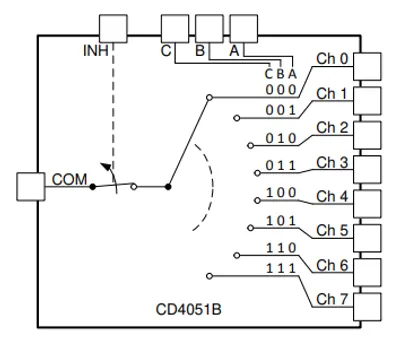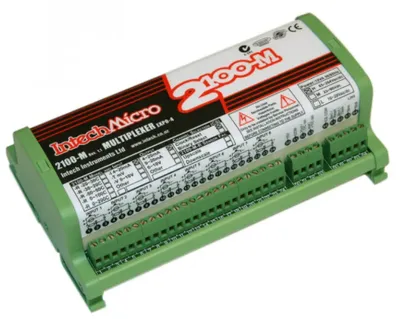Multiplexers And Demultiplexers
Multiplexers (a.k.a. a MUX or data selector) are integrated circuits which can be used to select one of many input signals and connect it to a single output signal. A demultiplexer does the reverse, it connects a single input signal to one of many output signals.
Analogue Multiplexers And Demultiplexers
Analogue multiplexers pass an analogue signals from one of many inputs to a single output. Whilst a digital multiplexer buffers and amplifies the output, an analogue multiplexer does not, you can simply view it as a simple switched connection between input and output (albeit with a larger resistance than a mechanical switch). For this reason, analogue multiplexers are bidirectional (signals can pass from input to output, as well as pass from output to input), whilst digital multiplexers are single direction only (from input to output).

It’s important to note that most analogue multiplexers have a much higher resistance than a traditional mechanical switch or even transistor, with most specifying an on-state resistance (max) between and .
Deviations From An Ideal Switch
- The on-state resistance of a analogue multiplexer is much higher than a mechanical switch.
- The voltage on the input and output cannot exceed and by more than a diodes forward voltage drop (, any higher than this and conduction from your signal to the rails occurs, distorting your signal).
Datasheet Parameters
On-State Resistance
The resistance between the input and output when the input is switched to the output. Typically specified as a maximum, with nominal values being between and .
Switching Procedure
- Break-before-make
Manufacturer Part Numbers
- 4051: Common part number segment used by a number of manufacturers for a analogue 8:1 multiplexer.
- 74HC4051: Family of “4051 style” analogue multiplexers by Nexperia.
- CD4051: Family of “4051 style” analogue multiplexers by Texas Instruments.
- CD74HC: Popular range of analogue multiplexers by Texas Instruments.
DIN Mounted Analog Multiplexors
DIN-mounted analog multiplexors are designed to multiplex many incoming analog input signals before being fed into a PLCC with a limited number of analog inputs (perhaps just one!).


